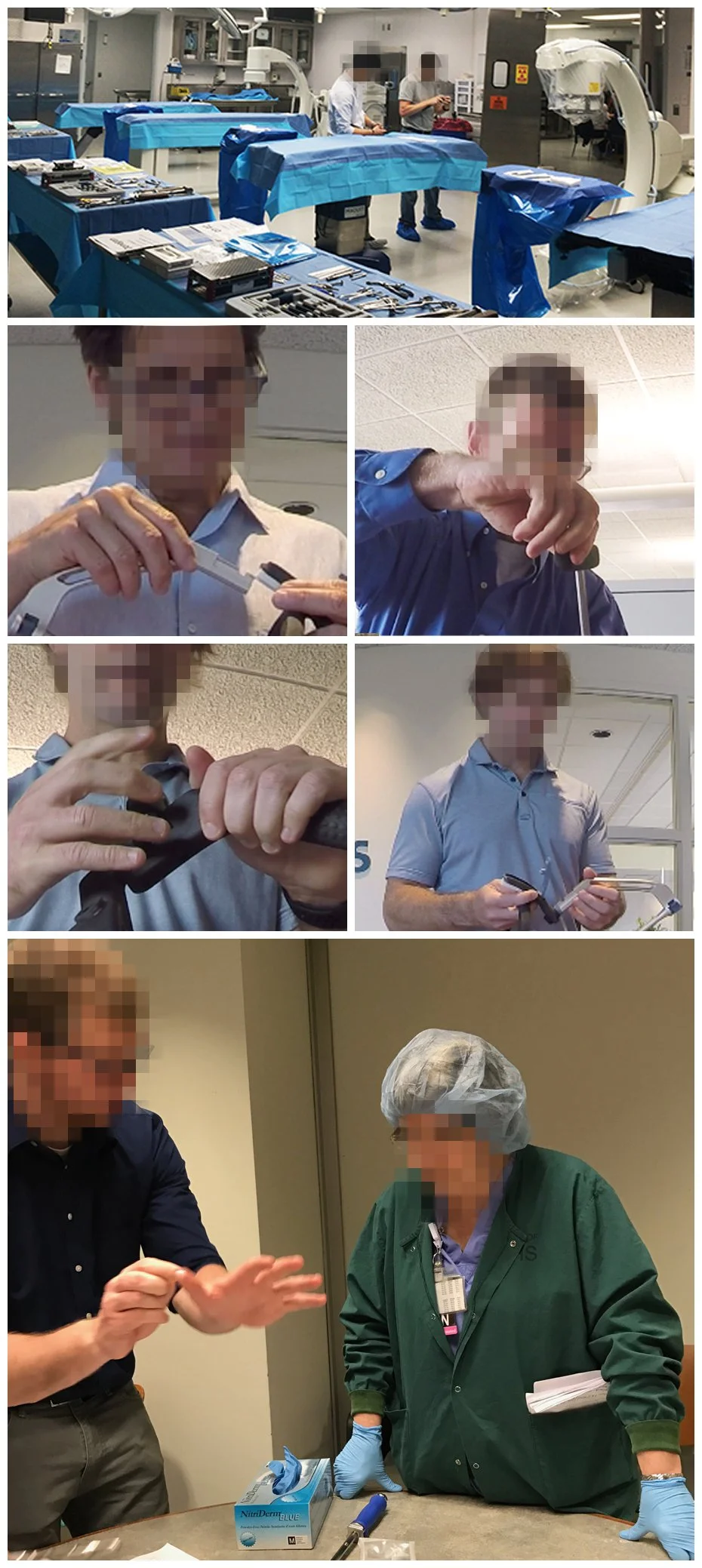DepuySynthes, J&J MedTech
Design of the Depuy Synthes small fragment system that consists of instruments, trays, and implants. This system supports surgical procedures to reduce and mend fractured bones.
Process
This project, targeted at modernizing an expensive surgical tool system, followed a methodological approach: understanding the issue through research, ideating through rapid visualization, exploring solutions via prototyping, gathering user feedback through testing, and iteratively refining through cycles.
The problem
Replace a costly system that is plagued by outdated manufacturing techniques and easily susceptible to damage. Focus efforts on designing a sturdier system, lowering costs, prioritizing user needs, and enhancing the ergonomic functionality of the products.
My role
Lead UX designer, Industrial designer, UX researcher, and Product development.
Contextual and formative research
As part of the process, interviews were conducted with doctors, nurses, and other clinicians to obtain feedback on the design's progress. Research took place in hospitals and at J&J's bioskills lab, offering valuable insights. Numerous observations were gleaned from shadowing these professionals, enhancing understanding of their needs and preferences.
Small fragment case design
The Universal Small Fragment System is designed for addressing small bone trauma, encompassing anatomical areas such as the Shoulder, Clavicle, Elbow, Tibia, and Fibula. In the process of replacing an existing product, our team conducted contextual research to understand how hospitals were utilizing the current product.
Challenges with the current system include:
Usability: The current instrumentation lacks ergonomic design, is challenging to sterilize, and is prone to slipping during use.
Efficiency: The current set necessitates a surplus of instruments and trays for small fragment procedures, leading to inefficiencies.
Cost: Utilizing the set requires sterilizing the entire case after each use, contributing to excessive expenses.
Advancements with the new system encompass:
Enhanced Usability: Streamlined instruments and implants are carefully organized into a compact, modular system, catering to all small fragment cases. This offers improved ease of use for operating room teams.
Increased Efficiency: The system reduces the number of instruments and trays required for small fragment procedures, thereby enhancing operational efficiency.
Cost Reduction: By providing a core set with in-tray washing capabilities, the new system eliminates the necessity for additional sets per procedure, ultimately reducing procedural costs.
Small fragment instrument design
The instruments featured in this set were created many years ago, the manufacturing techniques were outdated. While they garnered respect from surgeons, their manufacturing costs were prohibitively high. Additionally, these instruments posed challenges such as difficulties in sterilization and a tendency to be slippery during use. Through contextual research, our team discovered what surgical teams appreciated about both the current instruments and those of competitors. This served as a foundational basis for the design of new instruments. We discovered that factors like weight, balance, and ease of use ranked highly among their preferences.
Takeaways
1. Impact: The overhaul of the Small Fragment Set provided a vital uplift for the company. The original set, crafted many years ago, no longer aligned with the budget-conscious approach of today's hospitals. With enhanced affordability in manufacturing, a more robust design, and improved system efficiency, this company is now positioned to lead the market more effectively. With numerous competitors emerging in the space, rather than losing market share due to cost and inefficiency, Depuy Synthes can anticipate growth opportunities.
2. What I Learned: Being a designer within a large corporation offers significant advantages in terms of budget and resources, yet the necessity to move quickly can sometimes hinder the ability to make a notable impact. Reflecting on the work presented here, it's evident how profoundly design influenced both the project outcomes and team dynamics. With exceptional management and a culture that valued design, I gained invaluable experience in advocating for user needs and defending design choices. Learning to balance cost considerations within tight budget constraints was crucial, but prioritizing end-user feedback above all else provided the necessary support for the majority of design solutions.

















